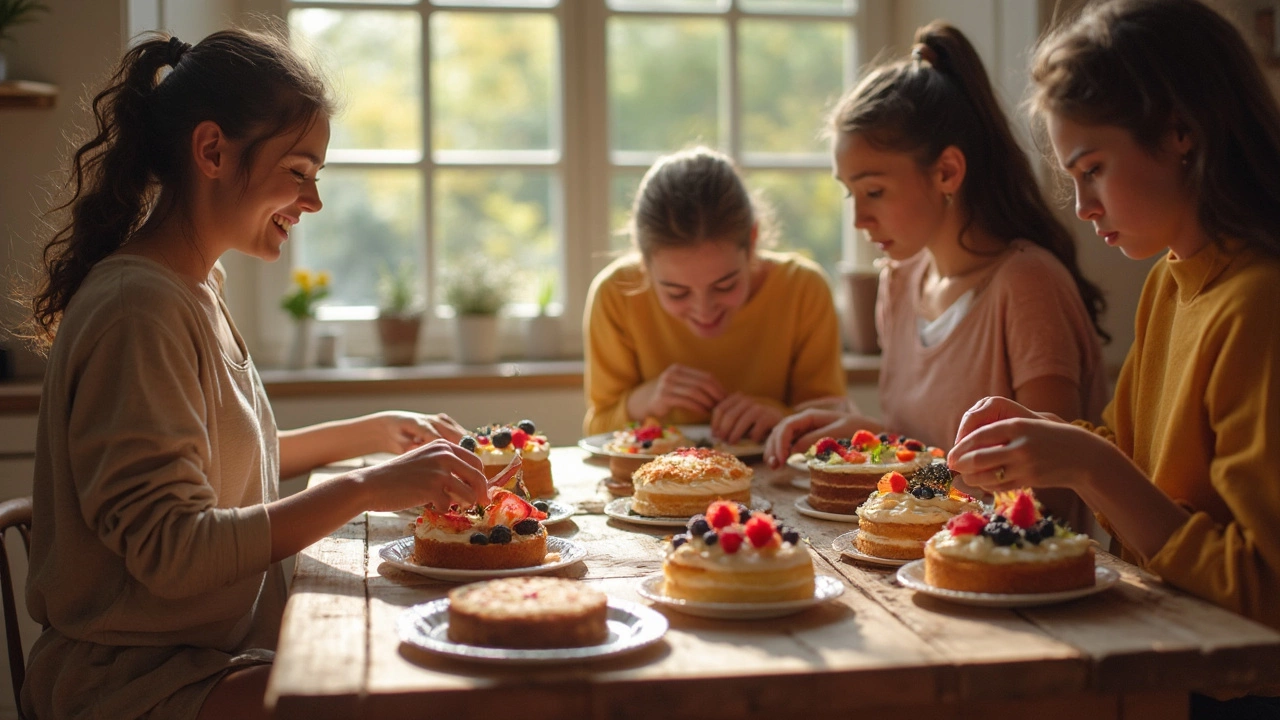
It’s kind of wild how easy it is now to spot (or even make) a vegan cake, but if you’re new to this, you might wonder what “vegan cake” actually means. In basic terms, a vegan cake skips all animal-based ingredients—so, no eggs, no dairy, and definitely no honey. But that doesn’t mean bland or dry. Get this: some vegan cakes are impossibly rich and moist, and even non-vegans usually don’t notice the difference.
So if you’re trying to figure out which cakes are vegan when you go shopping or stand in front of your oven, there’s a simple trick—check the list for eggs, milk, cream, butter, or sneaky things like gelatin and some colorings. Sound tricky? It doesn’t have to be. You’ll run into plenty of tasty cakes these days made entirely from plant-based stuff, and you’ll spot classic flavors like chocolate, carrot, lemon, or coffee—just made in a different way. There’s a whole world of vegan baking swaps and hacks (my daughter Tamsin was obsessed with banana bread made with flaxseed ‘eggs’ for weeks). You’re about to see how much is possible—without the cow, chicken, or bee involved.
- What Makes a Cake Vegan?
- Popular Vegan Cakes and Flavors
- Surprising Non-Vegan Ingredients to Avoid
- Tips for Buying and Baking Vegan Cakes
What Makes a Cake Vegan?
To call a cake vegan, it can’t have any animal products at all. The biggest offenders in regular cakes? Eggs, dairy milk, butter, cream, and sometimes honey. If you spot one of those on the label or in a recipe, it’s not vegan, end of story.
Instead, vegan cakes are built with swaps for every animal ingredient. Think almond, oat, or soy milk for regular milk. Use coconut oil or vegan margarine in place of butter. Eggs can be traded for things like flaxseed and water, applesauce, mashed bananas, or even baking soda and vinegar to help things rise or bind together.
Here’s what typical substitutions look like:
- Milk: swapped for plant milks (oat, soy, almond, coconut, rice, cashew)
- Butter: vegan margarine, coconut oil, or neutral-flavored vegetable oil
- Eggs: flaxseed meal + water ("flax egg"), chia seeds + water, applesauce, mashed banana, silken tofu, baking soda + vinegar
- Cream: coconut cream, silken tofu, cashew cream
- Honey: maple syrup, agave, date syrup
You might be shocked at how well these swaps work—even boxed cake mixes can sometimes be made vegan with a few tweaks. In fact, a study published in 2023 found more than 22% of commercial cake mixes in major supermarkets were labeled vegan or could be made vegan by following package swaps. Vegan baking is definitely on the rise.
Some cakes also sneak in animal products with less obvious names. Look out for gelatin (from animal collagen), confectioner’s glaze (from insects), and certain food dyes (like carmine, which comes from beetles).
| Common Ingredient | Vegan Substitution |
|---|---|
| Egg | Flaxseed meal + water (flax egg) |
| Butter | Vegan margarine or coconut oil |
| Milk | Oat, soy, almond, or other plant-based milk |
| Honey | Maple syrup or agave |
Bottom line: If you want your cake fully vegan, double-check that all parts, even the frosting, stick with plant-based stuff.
Popular Vegan Cakes and Flavors
You don’t have to settle for boring when it comes to vegan cakes. Bakeries and home bakers have figured out creative ways to make plant-based versions of almost every classic cake you can think of. The trick? Swapping out animal products with smart alternatives like almond milk, coconut cream, flaxseed, and even aquafaba (the liquid from canned chickpeas that whips up just like egg whites—yep, really).
If you dig into the menus at vegan bakeries or scroll TikTok for plant-based recipes, you’ll spot a handful of superstar flavors. Chocolate is everywhere—moist, fudgy, and often made with avocado or coconut oil for extra smoothness. Carrot cake is another favorite. Bakers use oil (instead of butter) and sometimes add applesauce for that perfect crumb. Lemon drizzle and Victoria sponge both get the vegan treatment, usually switching out eggs for baking powder and plant milk, with a dairy-free buttercream or icing.
- Vegan cakes everyone recognizes: chocolate fudge, carrot, red velvet, banana bread, lemon pound, and coffee cake.
- Unique twists: matcha cake, chai-spiced loaf, and even classic birthday sprinkle cakes—all made fully plant-based.
- Gluten-free and vegan combos: A lot of bakeries do gluten-free vegan chocolate cake or cupcakes, using ingredients like oat flour or almond meal.
Here’s a quick look at some common swaps and flavors you’ll actually find in bakeries and shops around the US and UK:
| Cake Flavor | Main Vegan Ingredients | Common Substitute |
|---|---|---|
| Chocolate Fudge Cake | Flour, cocoa, plant milk, coconut oil | Flaxseed or applesauce for eggs |
| Carrot Cake | Carrots, flour, walnuts, vegetable oil | Apple cider vinegar and baking soda for lift |
| Lemon Drizzle | Lemon juice, flour, almond milk, sugar | Vegan margarine for butter |
| Red Velvet | Flour, vegan buttermilk, cocoa, beet puree | Vinegar for tang and rise |
| Banana Bread | Bananas, flour, walnuts, plant oil | Banana as an egg replacer |
| Coffee Cake | Flour, sugar, coffee, nut milk | Streusel with vegan butter |
If you’re shopping for special occasions, look for sticky toffee pudding or tiramisu—there are great vegan versions out there. Even showstopper birthday cakes with fancy fillings and frostings can be vegan. It all comes down to a decent recipe and the right swaps. There’s truly a plant-based version of pretty much any cake you’re craving. And by the way, if your kid suddenly turns vegan, you won’t be stuck serving fruit salad at their party. Trust me, I’ve been there.
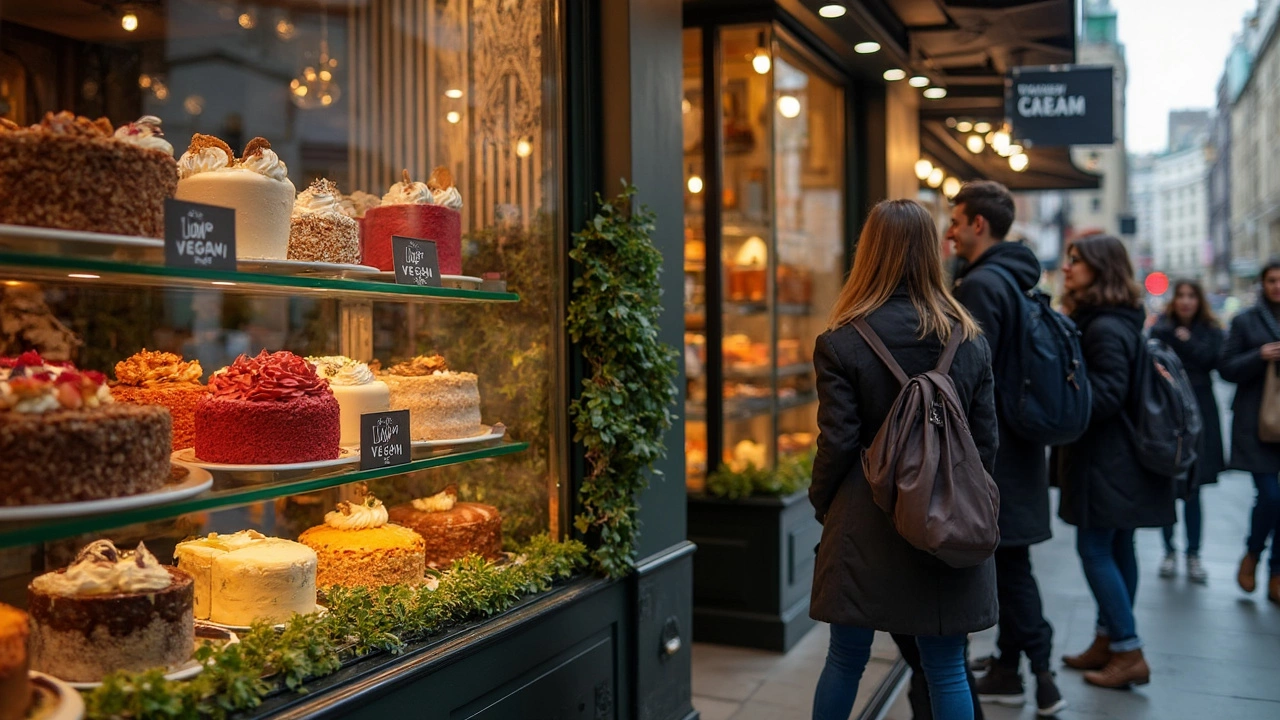
Surprising Non-Vegan Ingredients to Avoid
You’d be surprised how many cakes that seem harmless actually contain ingredients that aren’t vegan. Everyone knows about milk and eggs, but there’s a sneaky list of things hiding behind fancy names or numbers that still make their way into cakes—especially the processed or store-bought ones. You don’t have to develop detective-level patience, but knowing these will save you from a lot of label stress.
- Gelatin: Made from animal collagen—total no-go for vegans. Sometimes it’s in glazes or jelly layers.
- Honey: Bees make it, so it’s not vegan. Some cakes sneak honey in as a sweetener, especially in carrot or fruit cakes.
- Certain food colorings: Red food coloring (carmine or E120) comes from crushed beetles. Gross and definitely not vegan.
- Lecithin: If it’s not clearly labeled as soy lecithin, it could be egg-based.
- Mono- and diglycerides: These emulsifiers are usually plant-based, but sometimes made from animal fat. You’ll find them in some store cakes.
- Casein and whey: Both are milk proteins and pop up in some flavored cake mixes or frostings.
- Shellac: It comes from beetle secretions and sometimes shows up in shiny cake decorations or sprinkles.
- Marshmallows: Used in rocky road, s’mores cakes, or toppings—these almost always contain gelatin unless marked vegan.
Here’s a quick cheat sheet to keep handy for the next grocery trip or bake-off:
| Ingredient | What It's Made From | Where You Might Find It |
|---|---|---|
| Gelatin | Animal collagen (bones/skin) | Glazes, jelly layers, marshmallow decorations |
| Honey | Bee product | Natural sweetener in cakes |
| Carmine (E120) | Crushed cochineal beetles | Red or pink frostings, sprinkles |
| Shellac | Insect secretions (lac beetle) | Shiny glaze on cake decorations |
| Casein, Whey | Milk proteins | Frostings, chocolate chips, flavored cake mixes |
If you’re buying a cake and the ingredient list just says "emulsifiers" or "lecithin," don’t be shy—ask if it’s plant-based. And for home baking, stick to recipes that use simple, whole food swaps like applesauce, plant milk, or chia seeds. It’s honestly less of a headache than you’d think. Bottom line: if you want a proper vegan cake, double-check the sneaky stuff and you’re pretty much set.
Tips for Buying and Baking Vegan Cakes
Getting your hands on a good vegan cake—or making one yourself—doesn’t have to be stressful. Whether you’re at a bakery, scrolling through delivery apps, or heading into the kitchen, there are a few things you should know that’ll save you some headaches (and keep your cake actually vegan).
Bakeries are catching on. These days, major grocery chains like Whole Foods and even boutique bakeries often have labeled vegan cakes. But always double-check the fine print. Bakeries sometimes prepare vegan and non-vegan items side by side, so if you or your guest has a serious dairy or egg allergy, ask about cross-contamination. Never be shy about asking what’s in the frosting—classic buttercream almost always uses dairy.
“The rise in demand for plant-based desserts has encouraged bakers to get creative—and vegan customers now have more options than ever,” says Isa Chandra Moskowitz, author of Vegan Cupcakes Take Over the World.
If you’re baking, here’s what works best:
- Eggs: Try mashed bananas, unsweetened applesauce, or flaxseed "eggs" (1 tbsp. ground flaxseed + 3 tbsp. water per egg). These work for moisture and help your cakes hold together.
- Milk: Swap in soy, oat, or almond milk. Soy gives the closest texture and richness to dairy for most cakes.
- Butter: Use vegan butters (like Earth Balance or Miyoko’s) or even neutral oils like sunflower or canola.
- Honey: Replace with maple syrup, agave, or even plain old sugar (just make sure it’s not filtered with bone char—organic sugar is safest here).
Some cake mixes at the supermarket happen to be vegan if you use plant milk and skip the eggs. Duncan Hines, for instance, has several vegan-friendly cake mixes but always double-check the back.
Cake fails? Join the club. The classic mistakes are overmixing, skipping baking soda, or not greasing the pan enough. Pro tip: let your cake cool fully before you even think about frosting—it’ll help with texture and keep your frosting from slipping off.
Here’s a quick look at some top vegan cake ingredient swaps and their effects:
| Ingredient | Vegan Swap | Result |
|---|---|---|
| Egg | Flaxseed "egg" | Binds, adds moisture, subtle nutty flavor |
| Milk | Soy milk | Richness, easy 1:1 sub |
| Butter | Vegan margarine | Creaminess, classic texture |
| Honey | Maple syrup | Adds sweetness, no animal products |
Last bit: If you plan to decorate, check sprinkles and food coloring—some brands sneak in animal stuff like shellac or carmine (from bugs). Look for specifically labeled vegan decorations. Once you get the basics down, you’ll realize vegan cakes aren’t just possible—they’re actually pretty simple.



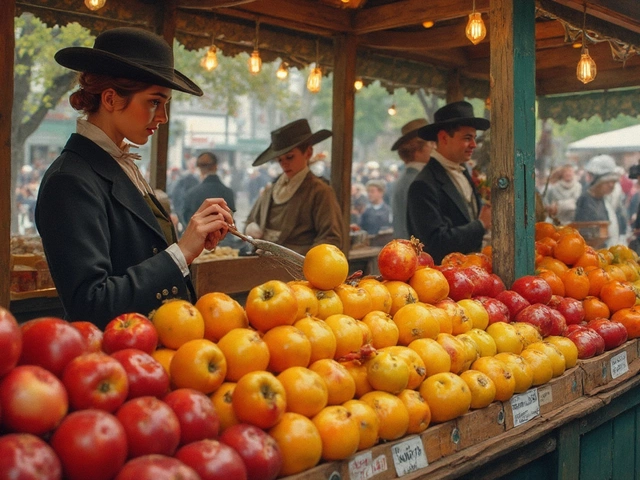
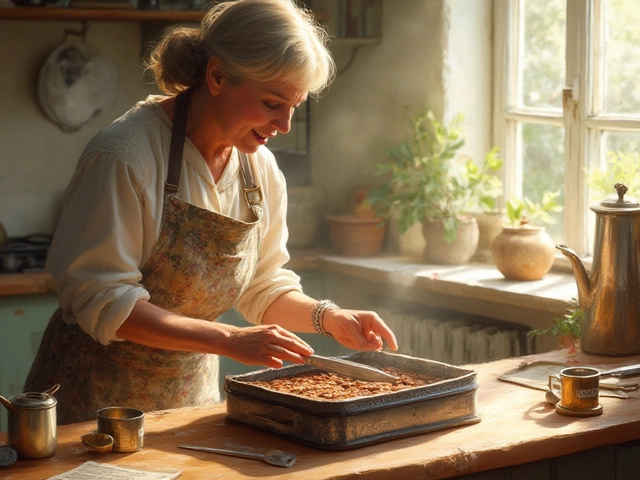
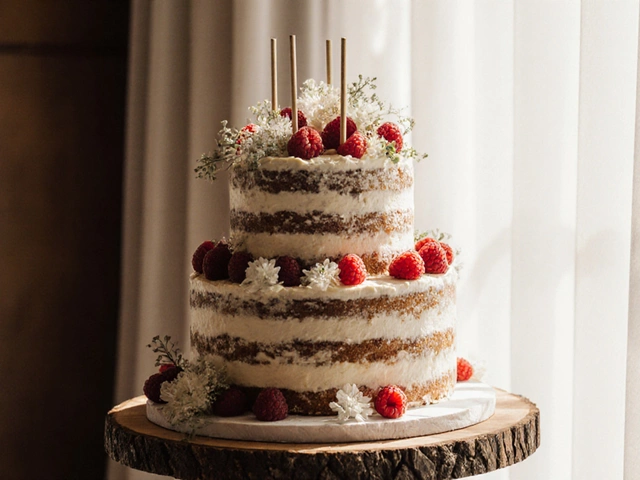

Write a comment